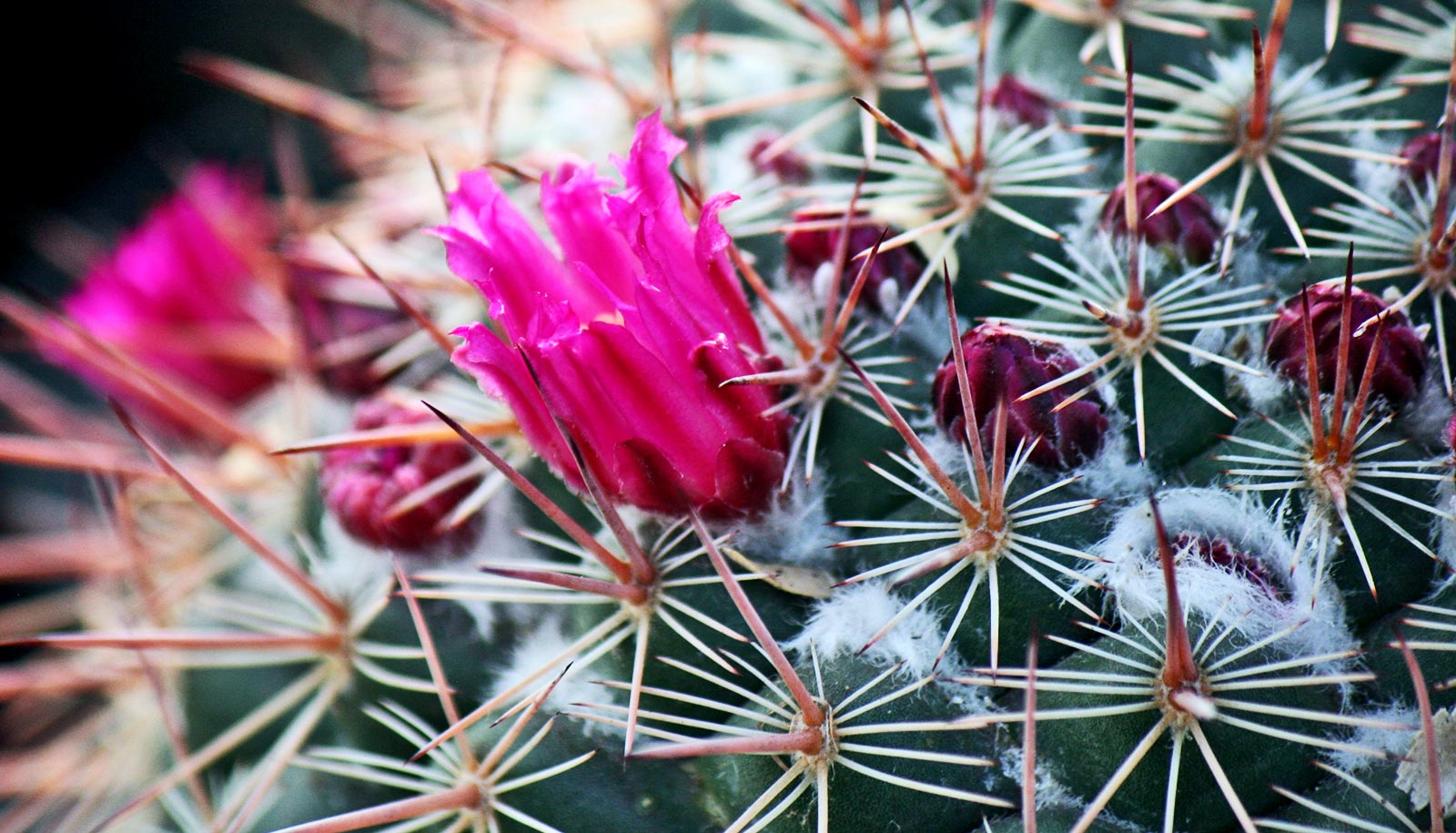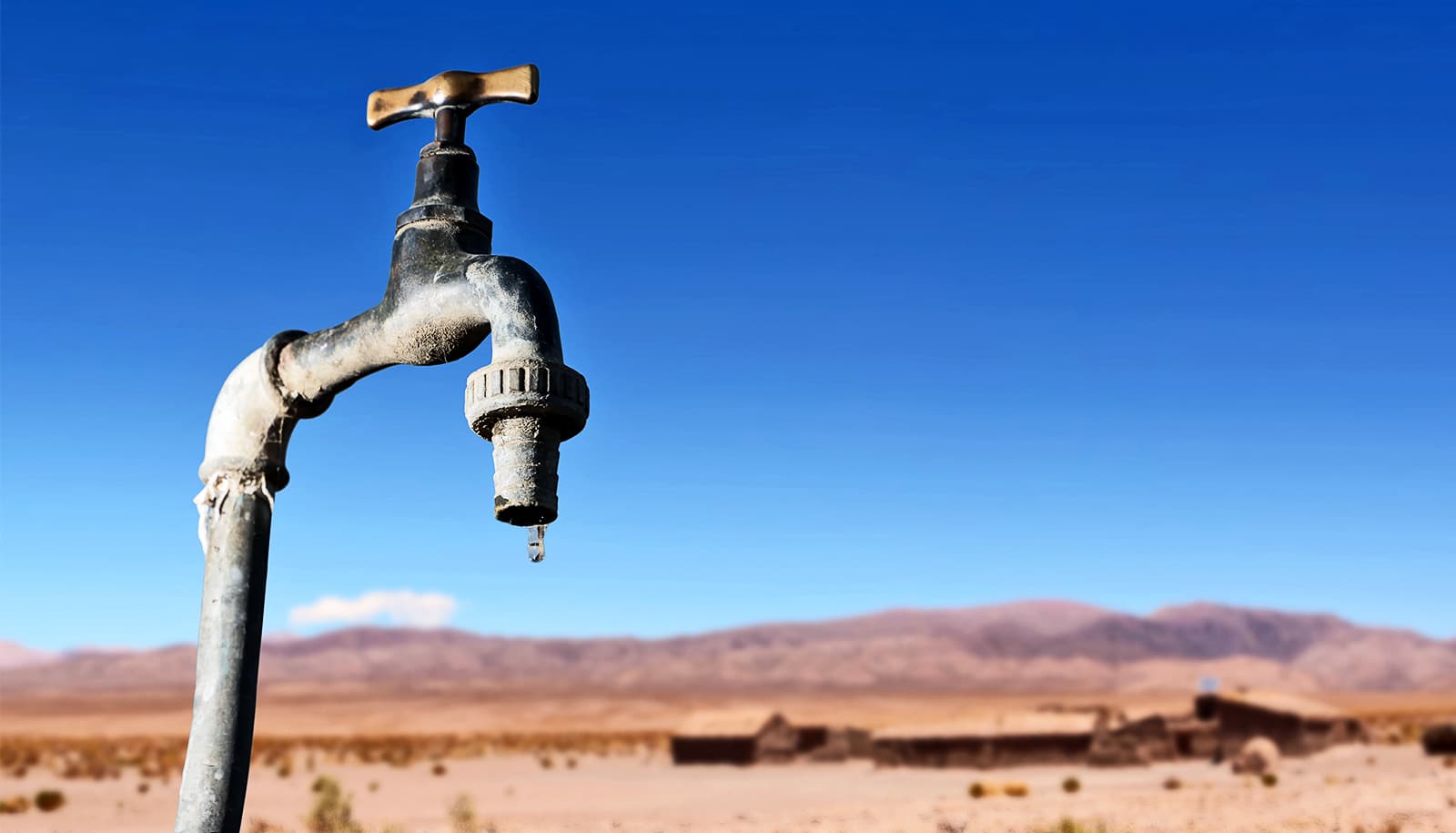To paint a clearer picture of how global climate change will affect Earth’s ecosystems, researchers forced the world’s only enclosed rainforest through a four-month-long controlled drought and recovery.
The findings, published in Science, reveal a roughly 70% drop in the rainforest’s carbon storage—speaking to concerns surrounding forests’ ability to capture and store carbon dioxide from the atmosphere as climate change progresses.
However, they also found that an intricate web of water-use strategies and soil interactions can support the forest’s stability in the face of extreme drought.
“The forest was, in some ways, surprisingly resilient to the drought,” says Laura Meredith, an assistant professor in the University of Arizona’s School of Natural Resources and the Environment in the College of Agriculture and Life Sciences at the University of Arizona and one of three leaders of the project.
The glass-enclosed rainforest at the university’s Biosphere 2, which houses 90 plant species across an area the size of seven tennis courts, allowed the researchers to simulate a full ecosystem drought.
The experiment, called Water, Atmosphere and Life Dynamics—or WALD, which is German for “forest”—set out to capture every bit of data possible throughout the drought and rewet process. Researchers placed nearly two miles of Teflon tubing and more than 133 sensors throughout the roughly three-acre rainforest to simultaneously collect measurements on everything from carbon pools in the atmosphere and vegetation, to microbiome and deep-water soil processes.
“We used stable isotopes to trace the movement of carbon and water through the ecosystem under normal conditions and severe drought, which revealed surprising plant-ecosystem interactions,” Meredith says.
“Importantly, individual plants did not all respond to drought in the same way. Some were highly drought sensitive and quickly slowed their critical carbon and water cycling to play it safe, while others were more tolerant of drought and maintained their function even under more risky drought conditions.”
In their experiment, the researchers categorized the plants’ reactions by their drought-tolerance and drought-sensitivity in both large canopy trees and undergrowth species.
“We observed one of the most astonishing reactions between the large, drought-tolerant and drought-sensitive trees,” says Christiane Werner, a professor of ecosystem physiology at the University of Freiburg in Germany and one of the project’s leaders.
Large, drought-sensitive trees generally consume the most water, especially from the topsoil. As the topsoil dried out first during the drought, these trees suffered the fastest and most severely from the lack of water, Werner explains. The researchers assumed drought-sensitive trees would immediately tap into the water resources in the deep soil.
“Instead, they drastically reduced their water consumption and only resorted to their deep-water reserves under very extreme drought,” Werner says. “In this way, they conserved the deep-lying water reserves for as long as possible.”
Large, drought-tolerant trees held onto their canopy leaves the longest, providing continued shade and sparing the undergrowth from further topsoil dehydration.
“Having a diversity of drought responses within the plants helped maintain greater carbon and water cycling functions of the entire ecosystem, both during the fullest extent of drought, as well as for quickly responding to the renewed availability of moisture with the arrival of rain,” Meredith explains.
While carbon storage in the forest system decreased significantly under increasing drought stress, plants released more volatile organic compounds, or VOCs, which are involved in communication and signaling among soil microbes and plants. VOCs are particularly important in how plants deal with stress.
According to the results, there was a cascade of emissions of different VOCs, including isoprene, hexanal, and monoterpenes, the last of which can support cloud condensation and rain formation and may serve as a protective mechanism against drought.
While plants were strong emitters of VOCs to the atmosphere, microbial life in the soil intercepted some of those compounds, mitigating the total amount that would be released to the atmosphere above a tropical rainforest.
“This counterbalancing role of soil microbes to plant VOC emissions persisted, even under severe drought, indicating that we need to take the role of microbial activity on atmospheric processes better into account,” Meredith says.
The WALD research team continues to work through the data from the experiment and has now turned to the ecosystem’s smallest scale, microbial life. The team aims to describe mechanisms of carbon and water cycling at these small scales by capturing the genomic and metabolomic profiles of soil and root microbiomes.
“Experimental ecosystems, like what we have at Biosphere 2, allow researchers to understand the holistic response of an entire ecosystem to stress,” Meredith says. “As we work to understand and predict ecosystem function in response to global change, we have to consider plant functional groups and their interactions with soils and the atmosphere, in both observational and modeling studies.”
Source: University of Arizona



